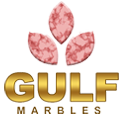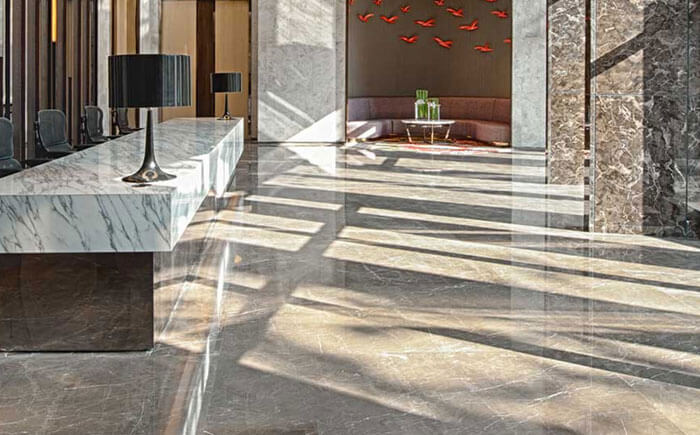Unlocking Potential: The Stone Market in GCC and Asia
MEA Industrial Flooring Industry Segmentation
The MEA industrial flooring market is a multifaceted landscape, segmented based on several critical factors:
- Resin Type: This segment includes epoxy, polyaspartic, polyurethane, acrylic, and other resin types, each with distinct properties and applications.
- Application: The market caters to various applications, including concrete, wood, and other specialized uses.
- End-User Industry: The sectors covered encompass food and beverage, chemical, transportation and aviation, healthcare, and several more, each with specific requirements for industrial flooring.
- Geography: The market is further divided into segments focusing on key regions such as Saudi Arabia, South Africa, and the rest of the Middle East and Africa.
In each of these segments, detailed market sizing and forecasts have been provided, offering valuable insights into the market’s growth potential, all measured in value (USD million).
Middle East and Africa’s Industrial Flooring Market
The MEA industrial flooring market has shown resilience with a CAGR of over 6%. In 2020, COVID-19 led to lockdowns, disrupting supply chains and construction. Despite this, the market recovered in 2021 due to increased construction.
Challenges Faced:
- Lockdowns and social distancing.
- Supply chain disruptions.
- Halted construction projects.
Resilience and Recovery:
- Remarkable market resilience.
- Strong recovery in 2021.
- Increased building and construction activities.
The short-term growth is driven by rising awareness of industrial flooring benefits and demand from the industrial construction sector. However, stringent VOC regulations may pose future challenges.
Opportunities:
- Growing popularity of bio-based flooring.
- The promise of polyaspartic coatings.
MEA Industrial Flooring Industry Segmentation
The MEA industrial flooring market is segmented based on several factors:
- Resin Type: Includes epoxy, polyaspartic, polyurethane, acrylic, and other resin types.
- Application: Covers concrete, wood, and various specialized uses.
- End-User Industry: Encompasses food and beverage, chemical, transportation, aviation, healthcare, and more.
- Geography: Segments focus on Saudi Arabia, South Africa, and the rest of the Middle East and Africa.
Market sizing and forecasts are provided in each segment based on value (USD million).
The Global Marble Market
Turning to the global marble market, it presents substantial growth potential:
- Market size: Estimated at USD 19.89 billion in 2023.
- Expected to reach USD 24.92 billion by 2028.
- CAGR: 4.61% during 2023-2028.
Impact of COVID-19:
- Challenges in 2020.
- Recovery to pre-pandemic levels.
The booming construction industry drives short-term growth. However, health concerns related to marble dust may hinder market growth.
Opportunities:
- Increasing use of marble slabs and powder.
Marble Industry Segmentation
The marble market is segmented based on key factors:
- Color: Includes white, black, yellow, red, and other colors.
- Application: Covers building and decoration, statues and monuments, furniture, and other applications.
- Geography: Spans 16 countries across major regions, with market sizing and forecasts provided in revenue (USD million) for each segment.
Asia-Pacific Dominance
Asia-Pacific is a dominant player in the global marble market:
- Significant consumption from China and India.
- Driven by robust construction and infrastructure projects.
In conclusion, the MEA industrial flooring and global marble markets exhibit resilience and growth potential. Despite COVID-19 challenges, these markets are on a path of steady growth. As stringent regulations and health concerns are addressed, the GCC, Asia, and beyond hold significant opportunities for industry players and investors. The future is marked by growth, innovation, and the enduring appeal of natural stone.
In the short term, the market’s growth is primarily propelled by the escalating awareness of the advantages offered by industrial flooring solutions. Simultaneously, increased demand from the industrial construction sector has played a pivotal role in driving the market forward. Nonetheless, stringent regulations to reduce Volatile Organic Compounds (VOCs) in industrial flooring materials may present challenges in the forecast period.
Despite these hurdles, the MEA industrial flooring market brims with opportunities. The industry is expected to experience growth due to the rising popularity of eco-friendly flooring options and the promising performance of polyaspartic coatings.
The Global Marble Market
Shifting our focus to the global marble market, we find another robust sector with substantial growth potential. The market size is currently estimated at USD 19.89 billion in 2023 and is projected to reach USD 24.92 billion by 2028, reflecting a notable CAGR of 4.61% during the forecast period spanning from 2023 to 2028.
As with the industrial flooring market, the marble market encountered significant challenges due to the COVID-19 pandemic in 2020. However, it has since rebounded, returning to pre-pandemic levels, and is poised for steady and sustained growth in the upcoming years.
The booming construction industry is expected to be the primary driver of global marble demand in the short term. However, it’s essential to acknowledge the health concerns associated with marble dust, which can cause skin abrasion and irritation, potentially impeding market growth. Nevertheless, the increasing utilization of marble slabs and powder across various applications promises to create many lucrative opportunities.
Marble Industry Segmentation
The marble market is subject to detailed segmentation based on key factors:
- Color: This segment comprises various color categories, including white, black, yellow, red, and other colors, each appealing to different aesthetic and functional preferences.
- Application: The market caters to various applications, including building and decoration, statues and monuments, furniture, and other specialized uses.
- Geography: The market spans 16 countries spread across major regions, with precise market sizing and forecasts for each segment, quantified in revenue (USD million).
Asia-Pacific Dominance
The Asia-Pacific region has become a significant force in the worldwide marble industry, with substantial consumption originating from countries such as China and India. This region’s robust construction and infrastructure development projects have fueled the demand for marble, making it a pivotal contributor to the market’s overall growth.
The MEA industrial flooring and global marble markets demonstrate remarkable resilience and substantial potential. Despite the multifaceted challenges posed by the pandemic, these markets are on a trajectory of steady and sustained growth, driven by burgeoning construction activities, technological advancements, and evolving consumer preferences. As stringent regulations and health concerns are actively addressed, the GCC, Asia, and beyond ground market promises to unlock even more significant opportunities for industry players, entrepreneurs, and investors. The journey ahead is defined by growth, innovation, and the enduring allure of natural stone.

